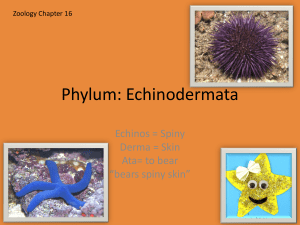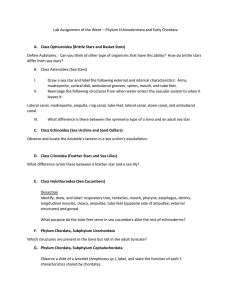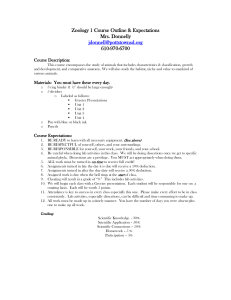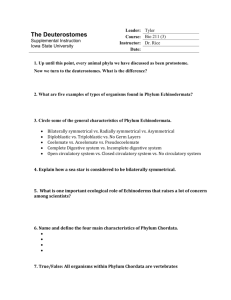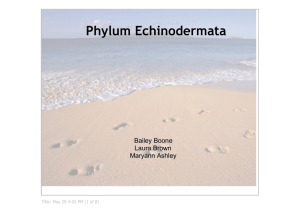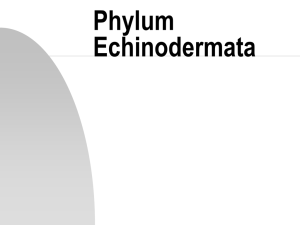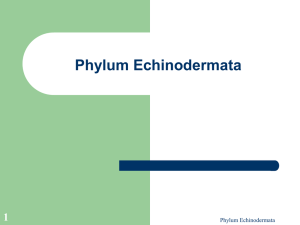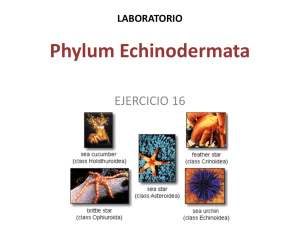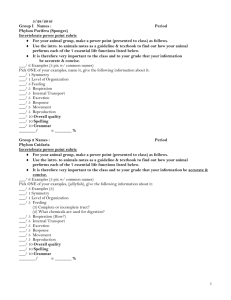Invertebrates 5
advertisement
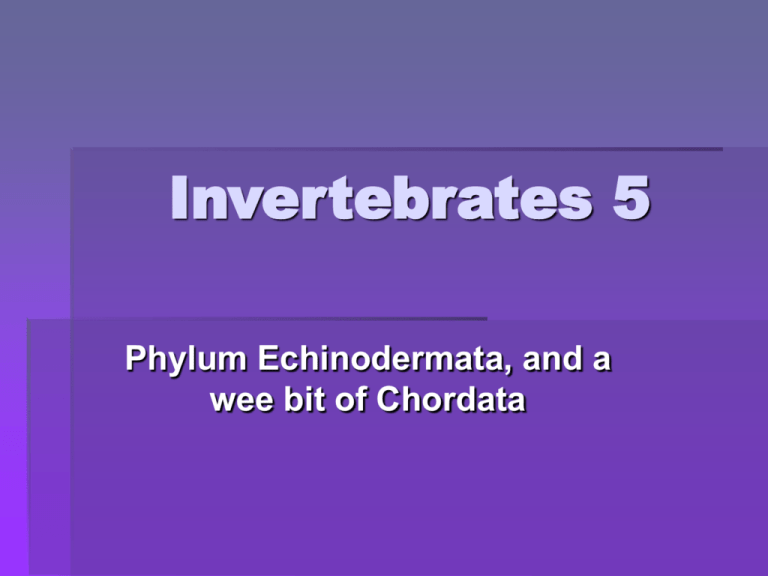
Invertebrates 5 Phylum Echinodermata, and a wee bit of Chordata Branchpoints: Protostomes vs. deuterostomes Phylum Echinodermata: Spiny-skinned Echinodermata: 4 key features Calcareous internal skeleton Parts: Plates, spines and pedicellariae Why “internal”? Water vascular system (controls tube feet) Derived from coelom Layout Tube foot control Other functions Symmetry: Pentamerous radial symmetry as adults/ bilateral as larvae Mutable connective tissue Body plan: Other aspects Perivisceral coelom Houses organs Gas exchange Hydrostatic skeleton Digestive system Can be highly branched Complete in some Nervous system No brain Branches parallel water vascular system Sensory Eye spots Receptors associated with tube feet Class Asteroidea: sea stars Body plan Feeding Respiration Protection Class Echinoidea: Sea urchins and others Body plan Feeding Respiration Protection Class Ophioroidea: Brittle stars, basket stars Body plan Feeding Respiration Protection Class Crinoidea Sea lilies Class Holothuroidea: Sea cucumbers Body plan Feeding Respiration Protection Phylum Chordata Our closest invertebrate relatives are slimy sacs that pump seawater Parting shot: Your closest invertebrate relatives
